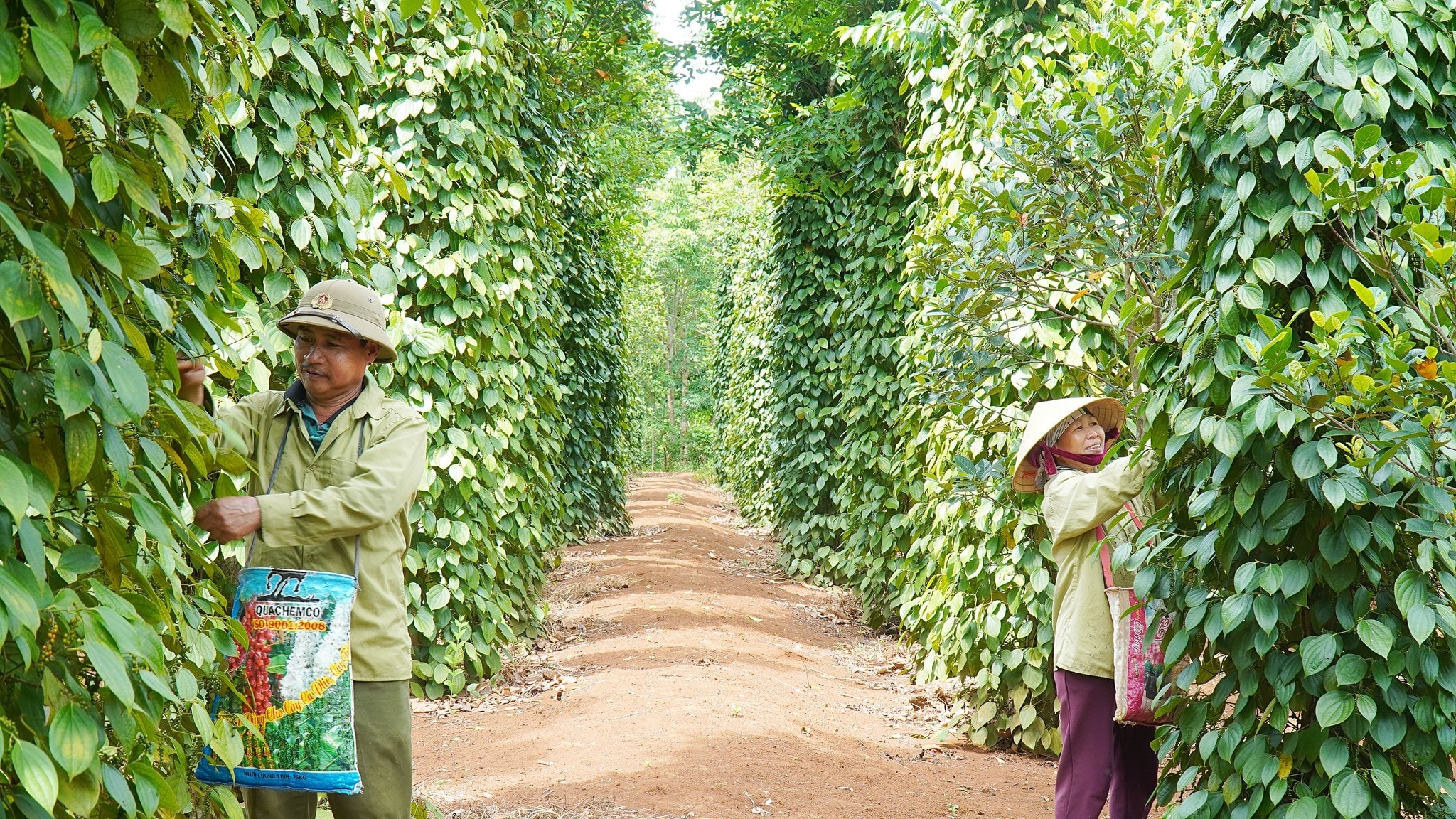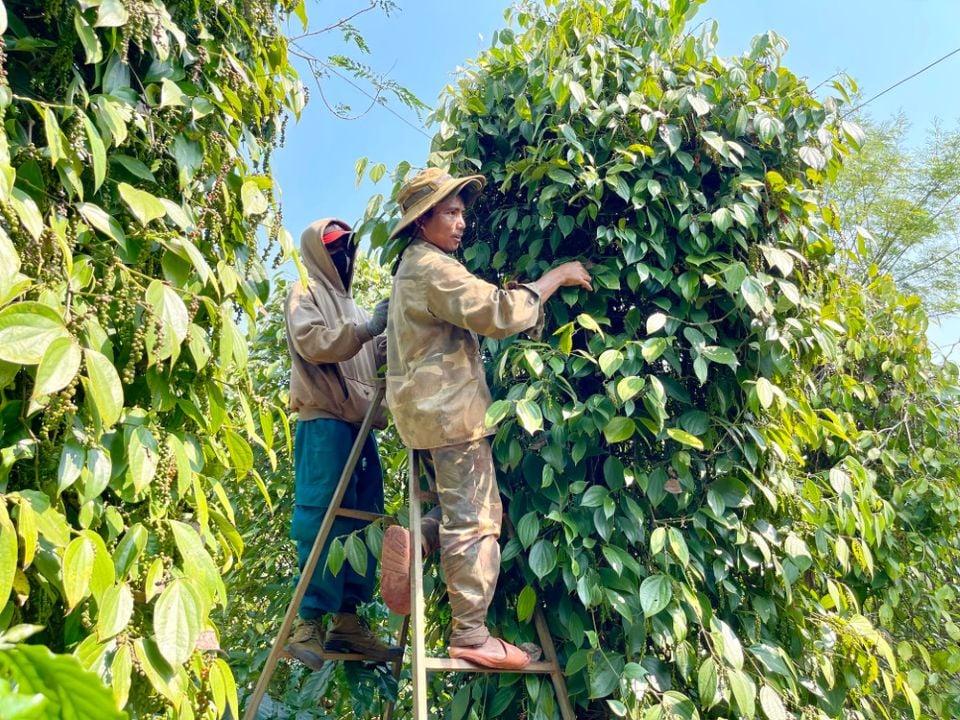Pepper price today 4/4/2025: Brazilian black pepper price decreased
Pepper price today April 4, 2025 in domestic market
Pepper prices today in some key growing areas remained unchanged compared to yesterday. Thereby, maintaining the domestic pepper price level at 157,000 VND/kg to 158,000 VND/kg.
In the Central Highlands region, pepper price today in Dak Lak remained unchanged compared to yesterday, currently at 158,000 VND/kg.
Pepper price today in Gia Lai is unchanged compared to yesterday, currently at 157,000 VND/kg.
Pepper price today in Dak Nong is unchanged compared to yesterday, currently at 158,000 VND/kg.
In the Southeast region, pepper price today in Ba Ria - Vung Tau is currently at 157,000 VND/kg, unchanged from yesterday. Dong Nai is unchanged from yesterday at 157,000/kg.
In addition, pepper price today in Binh Phuoc is unchanged compared to yesterday, currently at 158,000 VND/kg.

Currently, farmers in Gia Lai are actively harvesting pepper for the 2024-2025 crop year. Although domestic pepper prices are high, due to unfavorable weather, especially the prolonged cold spell during the flowering stage, productivity has decreased sharply, from 20% to 30% compared to the previous crop.
Gia Lai province currently has more than 7,500 hectares of pepper, mainly concentrated in districts such as Dak Doa, Chu Se, Chu Puh and Chu Prong. Vinh Linh pepper accounts for about 90% of the total area, the rest are Phu Quoc and Loc Ninh varieties. Of which, the pepper area currently being harvested is 6,157 hectares, with an average yield of about 3.5 dry tons/ha, for a total output of about 21,670 tons per year.
Gia Lai is also promoting the application of water-saving irrigation technology on more than 2,680 hectares and has 383 hectares of cultivation according to standards such as VietGAP, Organic and Rainforest. In the province, there are currently 5 facilities specializing in purchasing pepper and 9 facilities for preliminary processing and processing with a capacity of about 7,000 tons/year, meeting well the needs of processing and consumption.
In the Central Highlands and Southeast provinces, the harvest is being accelerated. Dak Nong has completed about 70% of the area, Dak Lak 40%, Lam Dong 60%. Provinces such as Gia Lai, Binh Phuoc, Dong Nai and Ba Ria - Vung Tau have also harvested about 50% of the area.
In Quang Tri, many farmers in districts such as Cam Lo and Vinh Linh are worried about crop losses due to massive pepper flower loss. The local agricultural sector identified the main cause as the prolonged cold and rainy season, which has resulted in low flower set rates, with many pepper gardens recording flower loss rates of up to 70-80%. In this situation, the agricultural sector recommends that people take proper care of their pepper gardens and promptly control pests and diseases to limit damage.
The decline in productivity this crop year has also been recorded in many localities such as Dong Nai, Gia Lai, Dak Lak and Ba Ria - Vung Tau. However, thanks to pepper prices increasing by more than VND10,000/kg compared to the beginning of the season, farmers are still optimistic.
In addition, this year the harvest is late, while many households have the mentality of keeping their goods and have more stable financial conditions, so they do not sell in bulk. This helps growers be more proactive in bringing goods to the market, creating stability for supply and selling prices.
Pepper price today 4/4 in the world market
In the world market, based on quotes from export enterprises and export prices in various countries, the International Pepper Community (IPC) has updated the prices of pepper of all types traded in the international market on April 1 (local time) as follows:
Indonesian Lampung black pepper prices remained stable compared to yesterday at USD 7,239/ton. In addition, Muntok white pepper prices remained stable compared to yesterday at USD 10,066/ton.
Brazilian black pepper ASTA 570 price decreased slightly compared to yesterday at 6,950 USD/ton (down 0.72%).
Malaysia's ASTA black pepper price remained unchanged from yesterday at $9,900/ton. Meanwhile, the country's ASTA white pepper price was also stable from yesterday at $12,400/ton.
Prices of all types of pepper in Vietnam remained stable compared to yesterday. Of which, the price of Vietnamese black pepper 500 gr/l reached 7,100 USD/ton; 550 gr/l reached 7,300 USD/ton.
Similarly, Vietnam's white pepper price remained unchanged from yesterday at $10,100/ton.
Source: https://baonghean.vn/gia-tieu-hom-nay-4-4-2025-gia-tieu-den-brazil-giam-10294400.html












